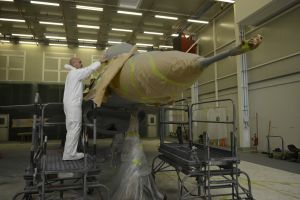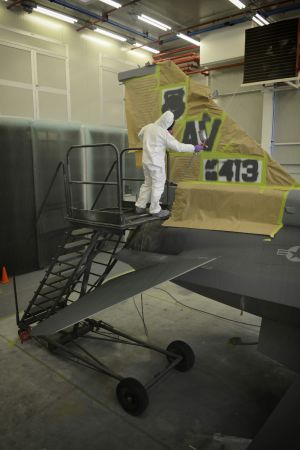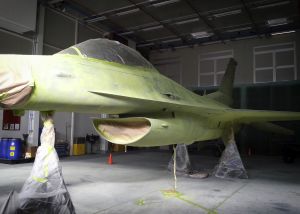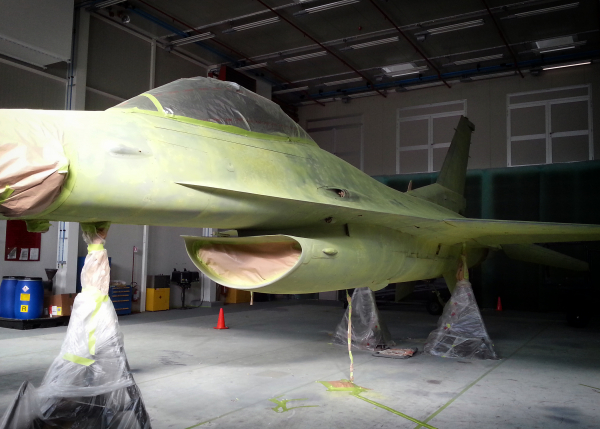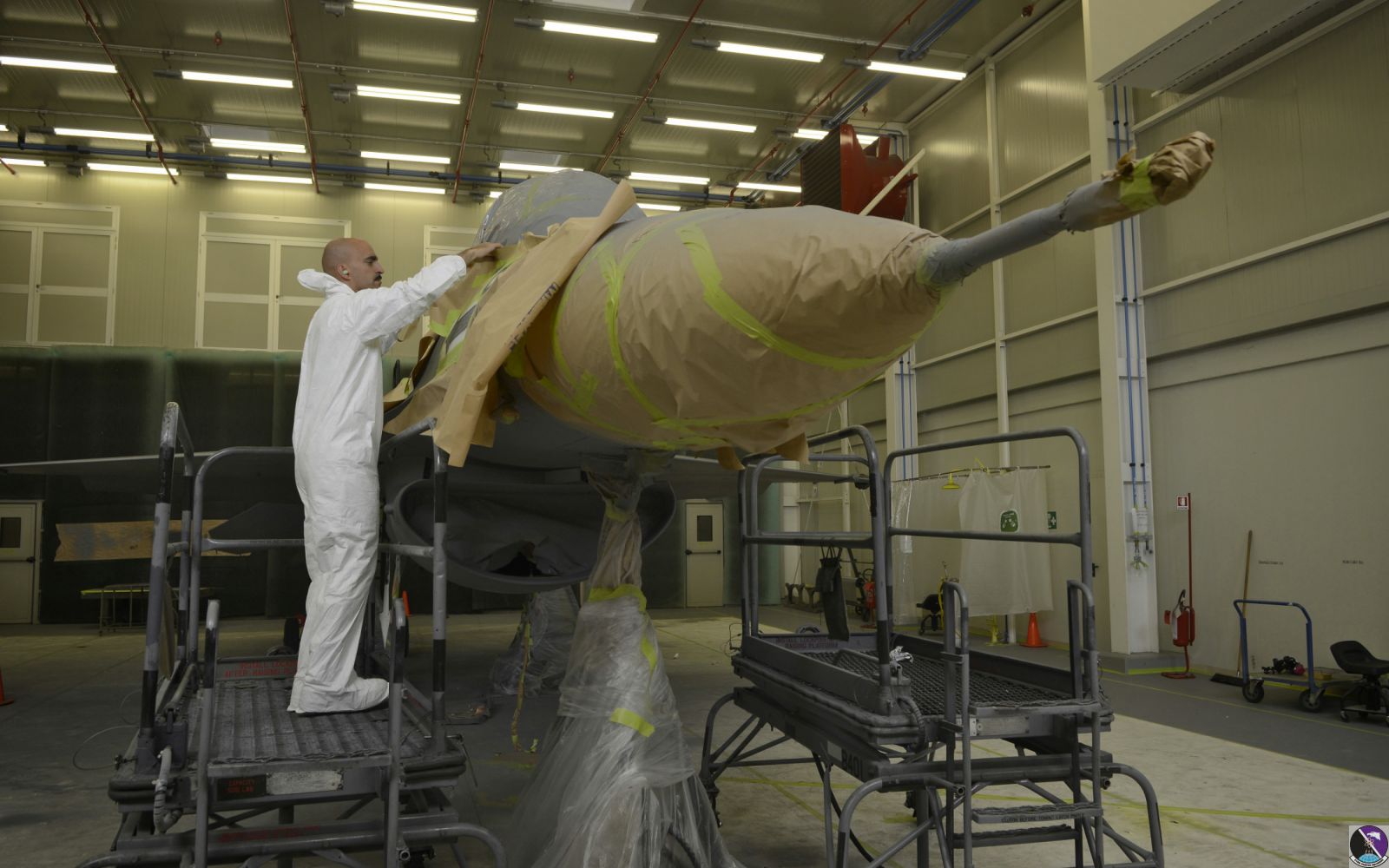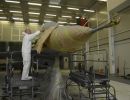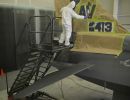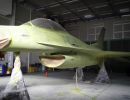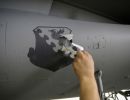Up until last year, all F-16 Fighting Falcons on Aviano were sent to either Spangdahlem Air Base, Germany, or a Belgian based aerospace company for repainting, costing the Air Force nearly $108,000 each time.
With a new facility and improved capabilities, corrosion control technicians are able polish, paint and restore aging aircraft parts across the base. The new paint jobs and polished exteriors are not for show, but rather, are an integral part of the Air Force's overall mission, protecting the structural integrity and longevity of Aviano's fleet of fighter aircraft.
"If we didn't do our job, the aircraft and the mission definitely wouldn't succeed. It would have dire consequences on the aircrafts capability to fly and get off the ground," said Tech. Sgt. Benjamin Jimenez, 31st Maintenance Squadron NCO in charge of corrosion.
According to Master Sgt. Jeremy Fisk, 31st MXS aircraft maintenance section chief, the Department of Defense spends nearly $5 billion annually on corrosion control to maintain aircraft and equipment around the world.
Various environmental factors such as wind, rain and sunlight, pose little threat to aircrafts alone, but when accompanied by time, chemicals and everyday usage, the metal structure becomes subject to deterioration, causing major problems down the road, according to Jimenez.
"Paint is helping extend the lifespan of our aircrafts and is what keeps the Air Force moving," said Jimenez.
The corrosion control unit focuses on repainting and preventing the deterioration of metal on aircraft and aircraft equipment through the use of special polyurethane paint that helps protect metal from the elements.
"We also paint the weapon rails that go on the aircraft, external fuel tanks, wheels, brakes and landing gear, in addition to everything that is used to power the aircraft from aerospace ground equipment," said Jimenez.
With the new facility, which boasts a new sanding bay, vacuum systems and air filtration, the Air Force is able to save time and money on corrosion, but that's not the only way the facility is helping Aviano.
"The ventilation system protects not only the people working inside from the chemicals and paint, but all the air is filtered through the back and goes through three stages of filtration to include the carbon filter at the end, which scrubs all volatile ozone depleting chemicals and makes the air cleaner before it goes outside," said Fisk.
From start to finish, a single aircraft takes eight days to repaint, beginning with a wash and degreasing in the outdoor bay. The jet is then moved inside where it is prepped and sanded down and stripped of all paint and decals. It's moved once more, where it is wiped down and raised up on levers to receive three coats of paint: primer, color and topcoat.
"Every base needs to have some way to prevent corrosion, from the largest piece of equipment to the smallest," said Fisk. "Before, we were limited to six square feet of room, so obviously we were very restricted. This new facility allows us to perform a complete repaint of the aircraft and get it back in the air in a fraction of the time."
8/15/2013 - AVIANO AIR BASE, Italy
by Senior Airman Jessica Hines
31st Fighter Wing Public Affairs
